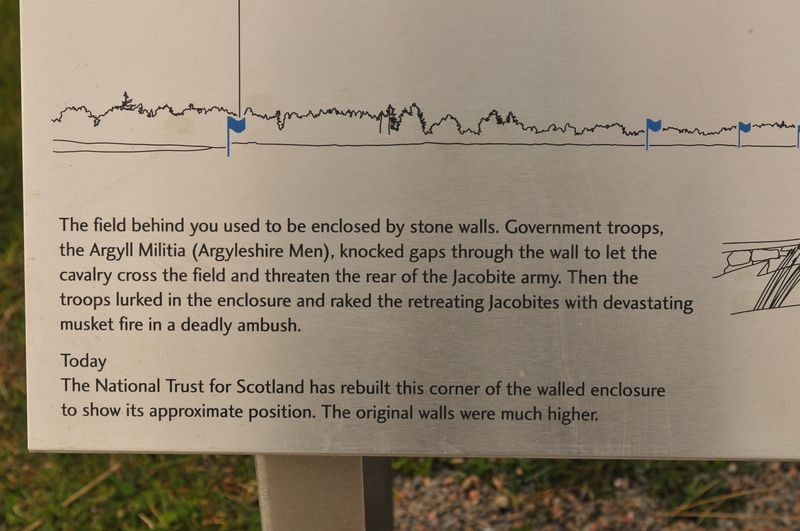|
-
16th March 17, 05:29 AM
#1
Here is where my old time training on the spirit of the law vs. the letter of the law raises it's ugly head. The letter of the law may not have been and outright ban of the tartan but, the spirit of the law was a ban. In your paper you point out how the ban on traditional clothes ended up in the loss of techniques and patterns of weaving and that once it was legal again many could not afford to return to traditional dress. So the English conquerors and occupiers managed to ban tartan for men at least, to effectively ban the production of fabric in the weights appropriate to the manufacture of men's clothing. The idea here was to attempt to eliminate a culture and they nearly succeeded.
-
-
16th March 17, 07:00 AM
#2
 Originally Posted by Stoff

Here is where my old time training on the spirit of the law vs. the letter of the law raises it's ugly head. The letter of the law may not have been and outright ban of the tartan but, the spirit of the law was a ban. In your paper you point out how the ban on traditional clothes ended up in the loss of techniques and patterns of weaving and that once it was legal again many could not afford to return to traditional dress. So the English conquerors and occupiers managed to ban tartan for men at least, to effectively ban the production of fabric in the weights appropriate to the manufacture of men's clothing. The idea here was to attempt to eliminate a culture and they nearly succeeded.
What English Conquerors and occupiers?
The Parliament that represented the that instituted the ban was made up of Welsh, English and Scots MPs.
The British army that Defeated the Jabobite's, was made up of Welsh, English, Irish, Hanoverians and Scots. They cannot conquer, what they already had control of Since 1707 and the Scots army long before that.
The battles were over WHO should Rule, Not over which country should Rule, Since both sides Claimed to represent the Whole of Britain. Had the Jacobite won, Charles would have gone to London and ruled from there. He wanted Britain not just Scotland
Both sides included Scots and Gaels, it was a British Civil war including different percentages of British peoples, plus some Hanoverians, on the government side, the French and Irish , on the Jacobite side.
"We make a living by what we get, but we make a life by what we give"
Sir Winston Leonard Spencer-Churchill
-
The Following 5 Users say 'Aye' to The Q For This Useful Post:
-
16th March 17, 09:12 AM
#3
I am not sure how true it is/was, but it was always said by those that probably know whats what up here in the Highlands that more Scots fought on the British side at Culloden than fought with the Jacobite army.
Taken by me at Culloden a few years ago.

Last edited by Jock Scot; 16th March 17 at 09:35 AM.
" Rules are for the guidance of wise men and the adherence of idle minds and minor tyrants". Field Marshal Lord Slim.
-
The Following User Says 'Aye' to Jock Scot For This Useful Post:
-
17th March 17, 12:33 AM
#4
 Originally Posted by Stoff

Here is where my old time training on the spirit of the law vs. the letter of the law raises it's ugly head. The letter of the law may not have been and outright ban of the tartan but, the spirit of the law was a ban. In your paper you point out how the ban on traditional clothes ended up in the loss of techniques and patterns of weaving and that once it was legal again many could not afford to return to traditional dress. So the English conquerors and occupiers managed to ban tartan for men at least, to effectively ban the production of fabric in the weights appropriate to the manufacture of men's clothing. The idea here was to attempt to eliminate a culture and they nearly succeeded.
The incorrect reference to English conquerors has already been mentioned. Regarding that banning of tartan, it was not banned for men, just for civilian use and even then, the Hanoverian gentry seem to have ignored it. Given that miles of tartan would have been required for the various regiments means that the idea that tartan was effectively banned is erroneous. Later the army cloth production was moved to the Lowland (Bannockburn) so it was the socio-economic changes, including the later Clearances, that the lead to the loss of the weaving traditions and techniques in the Highlands.
-
The Following 3 Users say 'Aye' to figheadair For This Useful Post:
 Posting Permissions
Posting Permissions
- You may not post new threads
- You may not post replies
- You may not post attachments
- You may not edit your posts
-
Forum Rules
|
|




















Bookmarks